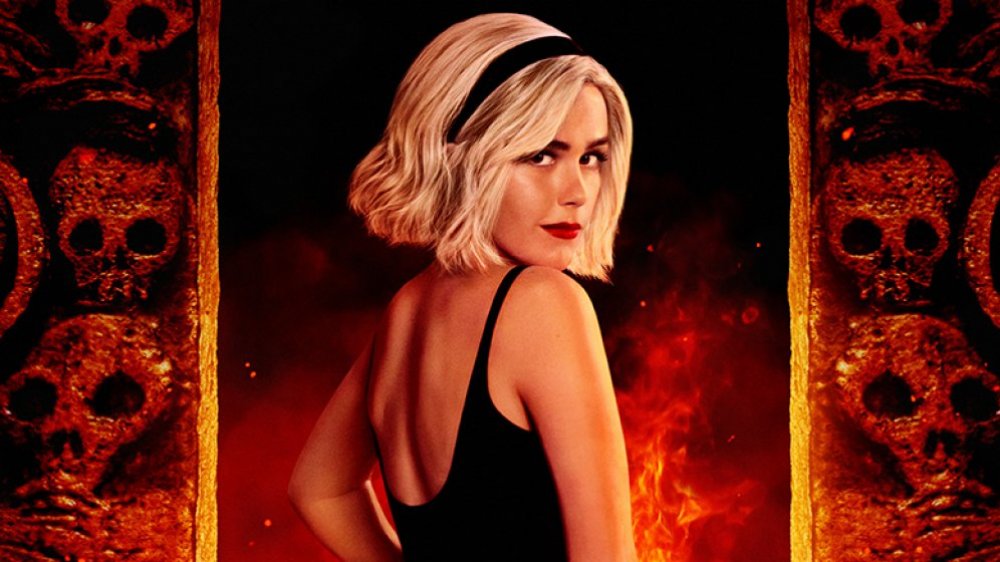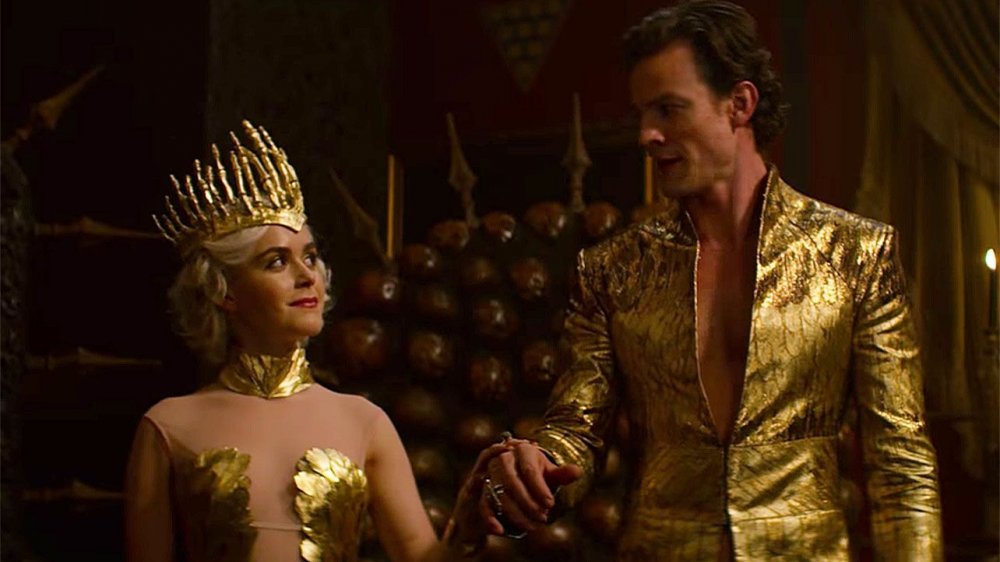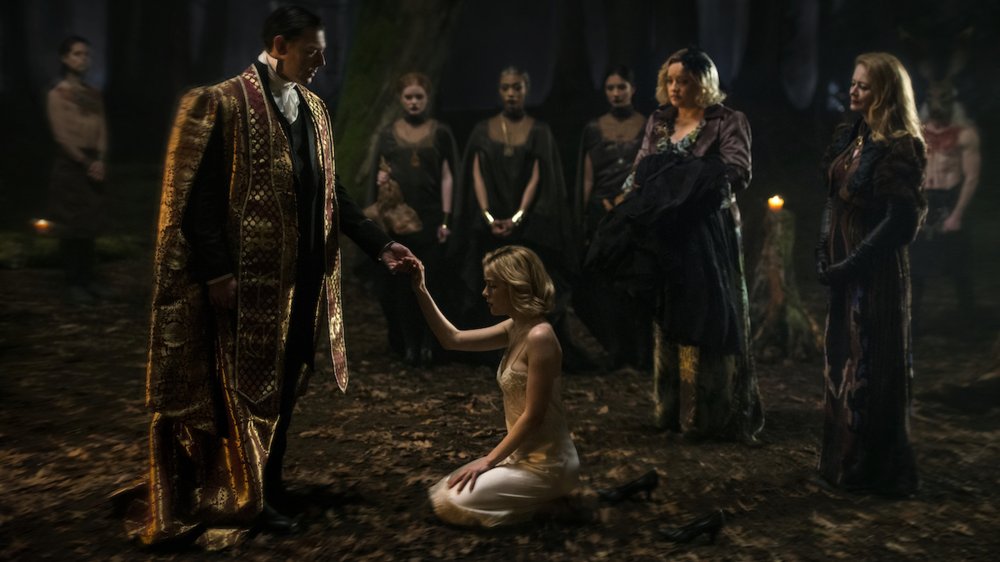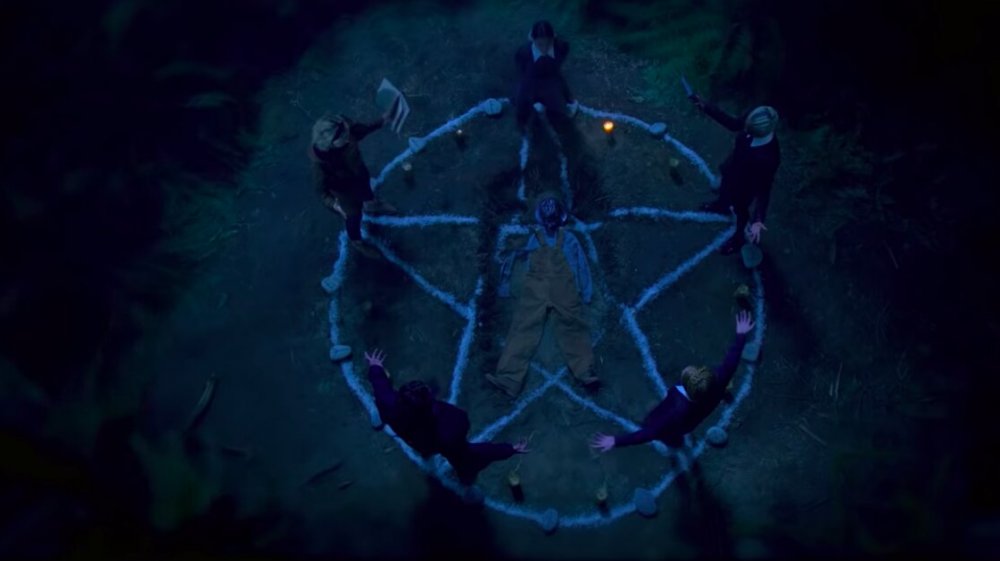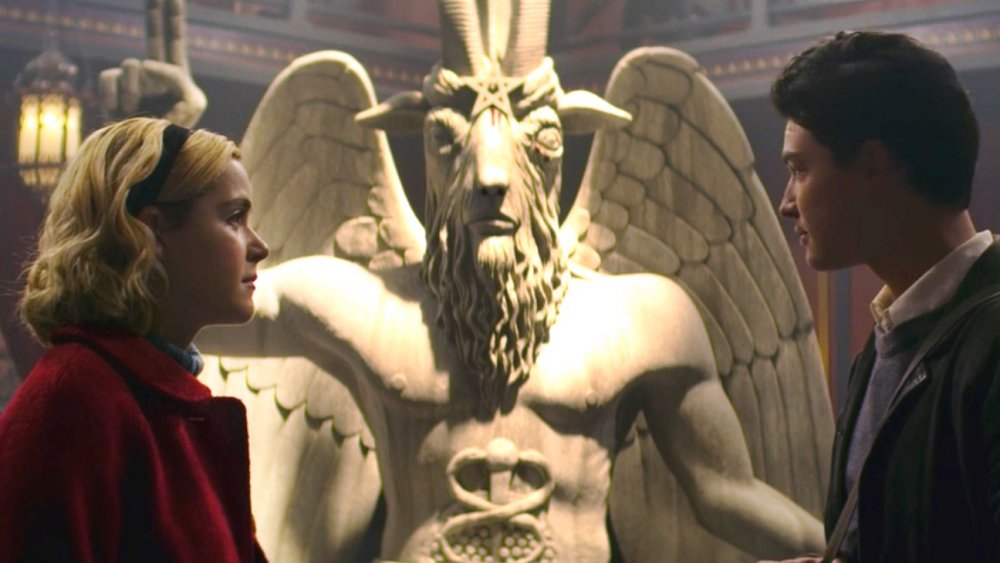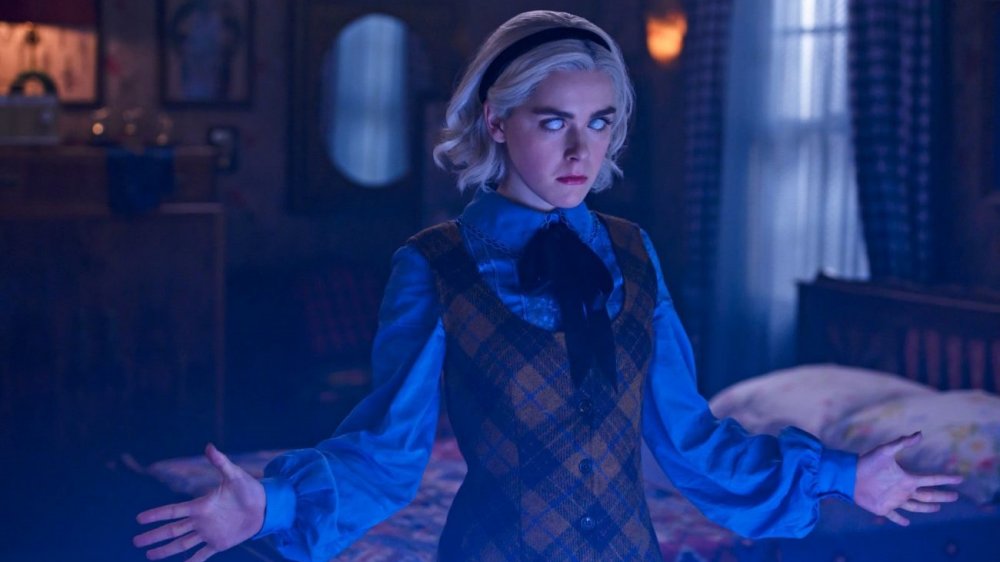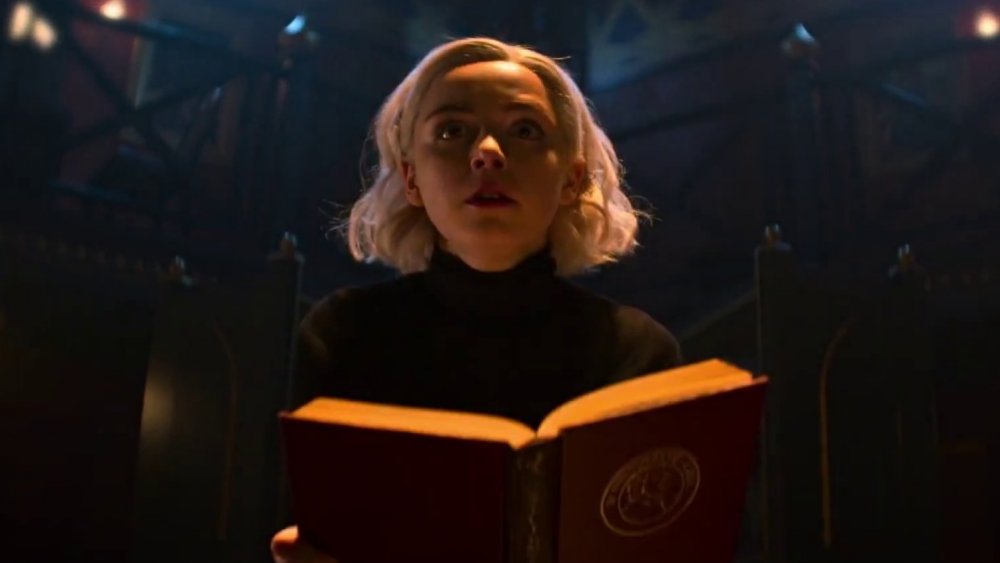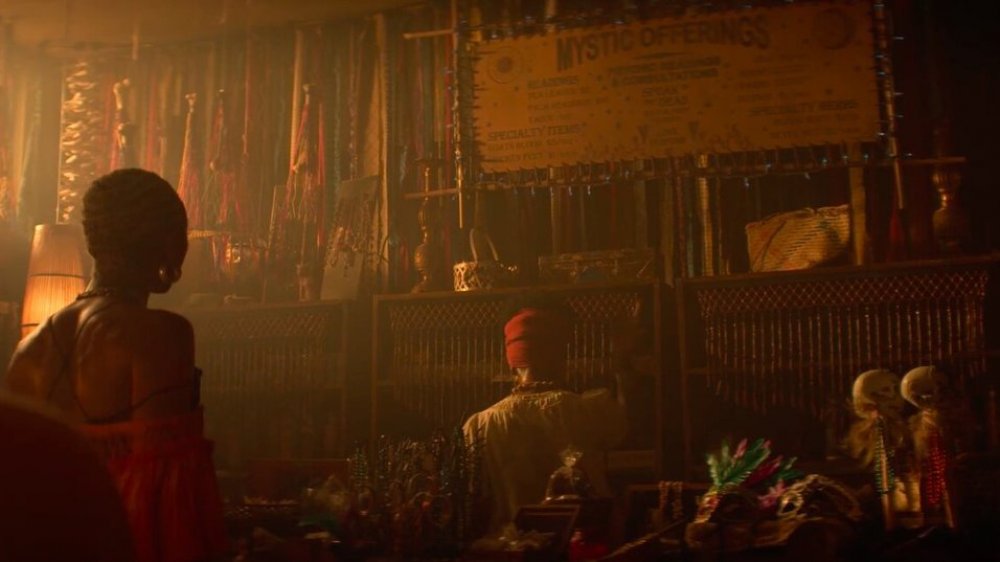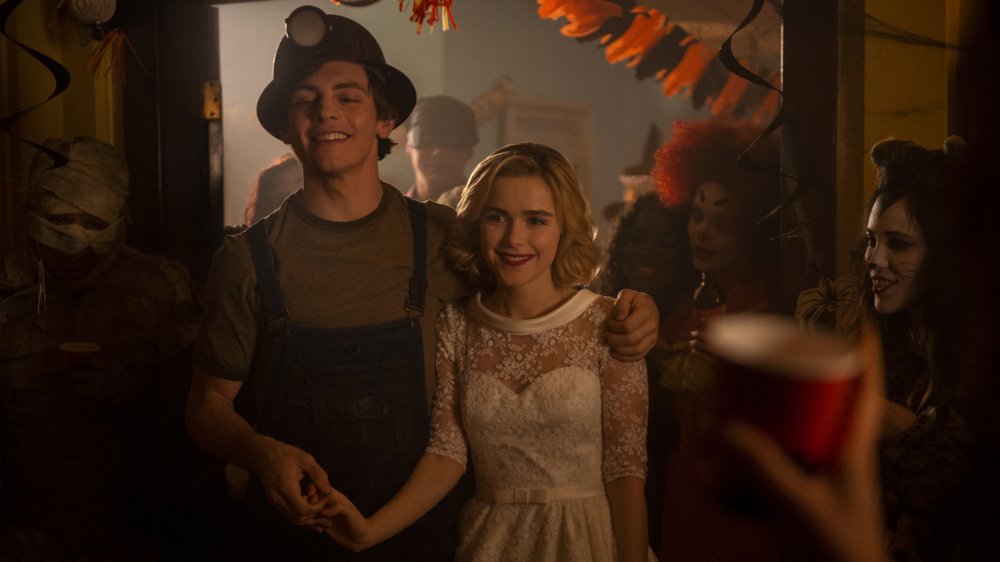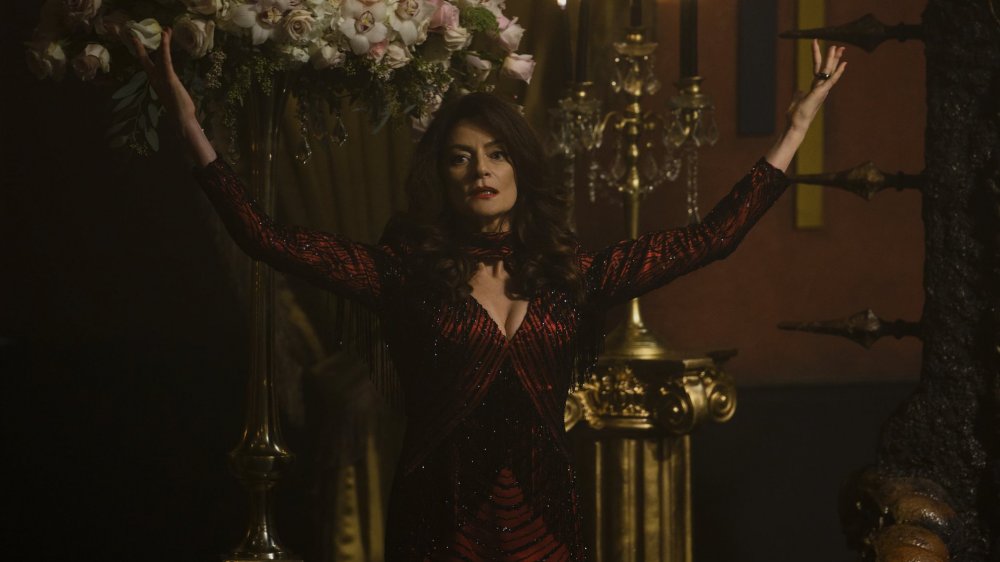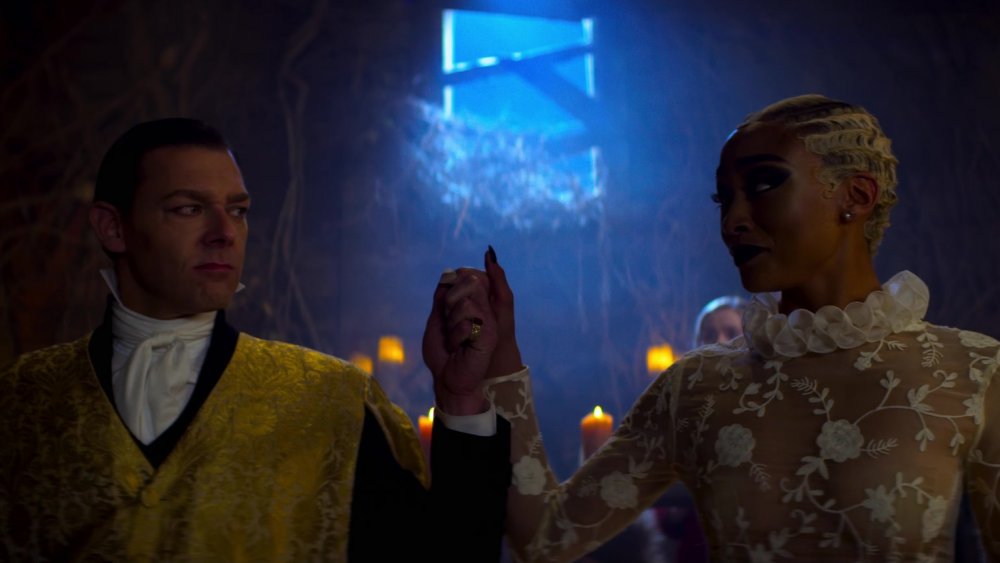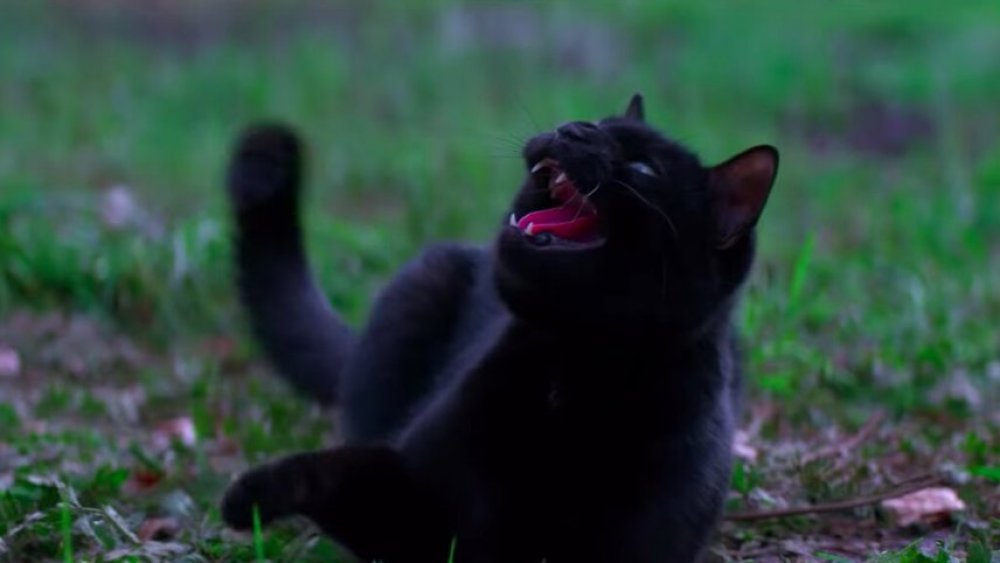What Sabrina Gets Wrong About The Occult
Chilling Adventures Of Sabrina is a Netflix show about a witch who, upon her 16th birthday, has to make the biggest decision of her life. No, she doesn't decide whether to stay home binging shows on Netflix (how meta) or go out with her friends, she chooses between living in the mortal world, or signing her soul over to actual Satan. No biggie.
The character Sabrina Spellman was originally introduced by Archie Comics in 1962, and spun-off for her own series of books in 1971. Since then, Sabrina has gone from comics, to animated feature, to a live-action film and, later, a long-running TV series starring Melissa Joan Hart. Until now, Sabrina's witchery has always been depicted as being bubble gum sweet. Witchy-light, if you will. There were spells, sure, but they were conducted as cheerily as possible, and to a laugh track.
Then in 2018, Netflix released their brand-new take on the character. This time Kiernan Shipka plays the teenage witch, and that's not the only change. Sabrina's world is dark now, like "hail Satan" dark, and the show leans in on the shadowy aspects of the occult big time. So perhaps unexpectedly, in 2018 the Satanic Temple sued the show, claiming copyright infringement which made them look bad. Since then, other real-life members of the occult have turned a critical eye towards the show, voicing claims it does a disservice to actual witches. Here's what Sabrina gets wrong about the occult.
Most witches don't worship Satan (or even believe he exists)
In Chilling Adventures of Sabrina, every witch, including Sabrina, is given a dark baptism once they turn 16. During this ritual they sign their name in blood in the Book of the Beast, giving themselves over to an eternity of servitude to the Dark Lord (aka, Satan.) In doing so, Sabrina, who is only a half-witch, would put an end to all mortal ties and become a full witch, submersed in the world of the dark arts.
This makes for great television, but real-life witches call bulls**t on it. Refinery 29 quotes a witch named Amanda Yates Garcia as saying "scenes and storylines that depict witchcraft as dark magic, or somehow related to Satan, are the 'bane of [her] life."' Garcia, and many other witches like her, agree the concept of Satan is something that comes from the Christian religion, they don't believe in him, and he has no part in the occult practices witches associate themselves with.
A male witch named Myrddin told the BBC, "We don't do anything sinister like Devil worship and we don't make human or animal sacrifices. We honor, revere, and give thanks to nature. We celebrate the seasons. It's not all blood and gore." And Daizy October, a witch who contributed to a Huffington Post article on the matter, says "The 'lord' of witches is not 'Satan.' Most African Traditional Religion practitioners, Wiccans, and pagans have no concept of 'the devil' in their spiritual traditions at all."
No real witch would be 'forced' to do anything
The concept of servitude, a major plot point in Chilling Adventures of Sabrina, is not something any real witch would have an interest in. While in the show, witches are ruled and governed by a hierarchy of dark figures (Madam Satan, Actual Satan, Father Blackwood, etc.), the fundamental beliefs of witchcraft as it exists in reality revolves around governing oneself.
"I don't 'worship' anything. Rather, I listen, observe, commune, and connect with the world around me," says Laura Tempest Zakroff in a 2018 Refinery29 article about real witches and their beliefs. She goes on to say "honoring and respecting yourself" is a key value.
Quartz drives the point home further: In 1974 a group of 73 witches, known as The American Council of Witches, had a four-day meeting in Minneapolis to agree upon a set of common practices so Wicca could be recognized as an official religion in America. The end result was the Thirteen Principles of Wiccan Belief. Number one on the list is: "We practice rites to attune ourselves with the natural rhythm of life forces marked by the phases of the Moon and the seasonal Quarters and Cross Quarters." Key word ... "ourselves." In the sixth slot you'll find: "We do not recognize any authoritarian hierarchy, but do honor those who teach, respect those who share their greater knowledge and wisdom, and acknowledge those who have courageously given of themselves in leadership." No dark figure controlling everyone here.
The pentacle is actually a symbol of protection
At the end of the season one trailer, Sabrina and a few of her other classmates from The Academy of Unseen Arts are shown casting a spell while occupying all five points of a large pentacle drawn on the ground. The symbol of a five pointed star (pentagram) with a circle around it (pentacle) is used frequently throughout the series, primarily in association with some horrific and/or terrifying activity, but, as a real witch will tell you, that's not the intended use of pentagrams and pentacles.
According to the site Witches Lore, the pentagram and pentacle are symbols of protection against "evil and negativity." The pentagram represent the human form (think the Vetruvian Man), as well as the five senses, the three aspects of the Goddess, and the four elements of nature, while the circle is "a way to bind the elements together."
In other words, the symbol has been misrepresented for ages, but it cannot possibly be a symbol of evil or devil worship because Wiccans do not believe in the devil. According to the site, many true witches choose to conceal their pentacle and pentagram jewelry, even though to them they are symbols of goodness, because ignorant people have chosen to associate it with something evil and dark.
The sabbatic goat Baphomet is not really 'evil'
In 2018, the Satanic Temple sued Netflix and Warner Brothers over Chilling Adventures of Sabrina's use of a statue of the goat-headed deity Baphomet, claiming the show violated "copyright and trademark of The Satanic Temple's statue, which it built several years ago," according to USA Today. Traditionally, the deity Baphomet is depicted as a woman's body, with a goat's head, but the Temple's version has a male chest, and is flanked by two children.
The Satanic Temple's version of the statue can be seen heavily featured in Chilling Adventures of Sabrina, within The Academy of Unseen Arts, and they protest that the shows use of it creates an association of evil, and darkness, and the Temple (of Satan) would prefer to not be associated with such "evil antagonists." The $50 million copyright lawsuit was later settled, and Netflix agreed "to acknowledge copied elements of the Baphomet statue in the credits of episodes that have already filmed," according to Variety.
According to the Encyclopedia Britannica, most scholars believe the word Baphomet "refers to Muhammad, the founder of Islam." The website Occult World states that the word stems from "two Greek words, baphe and metis, meaning 'absorption of knowledge."' It's been appropriated by many different groups throughout the ages, but its origins are not directly tied to anything "evil." Also, again, real witches don't really get down with "evil."
Most spells aren't that elaborate
Throughout each season of Chilling Adventures of Sabrina, Sabrina, her aunts, and her peers at The Academy of Unseen Arts find themselves in predicaments that require elaborate spells to be conducted, often in Latin. Blood is spilled, the clouds quicken, smoke fills the room, everyone's eyes turn white. Spooky stuff. According to real witches, that's not really how things go down. At all.
In a 2018 SYFY post, Shana Leilani, a witch who works at a"metaphysical store" in Los Angeles, says "the appeal of witchcraft is dangerous and sexy, but real witches are more like your grandma." Bruja ("witch" in Spanish) Brittany Bella Graham adds that, although that's the reality with real witches, she realizes that "nobody would watch [the show] if Sabrina were just taking an herbal bath."
If a witch feels like adding a bit of dramatic flair to their spells, sure, there's the option of reciting them in Latin, but for the most part, they require little more than a few herbs, and magickal intentions.
A lot of the spells shown on the show are dangerously off
If you're ever tempted to try out a few of the spells shown on Chilling Adventures of Sabrina ... don't. Witches who are well-versed in real-life spell casting say that the ingredients used in some of the potions brewed on the show could really harm you.
Shana Leilani, a Los Angeles-based witch, contributed to a SYFY article about what real witches have to say about the show. "Who's consulting for you guys?" Leilani asked about the show's depiction of spells. "You got about five percent right and then you went off in this whole different direction ... I really hope some dumb teenager doesn't try drinking this. You better really know your dose, or you could end up killing yourself."
Joshua Conkel, a writer for the show, is a practicing witch himself and admits that some of the writers do more research than others. "The mandate has always been to borrow from books and films, not so much real witchcraft practices," Conkel says in a 2018 interview with Patheos.
Voodoo dolls are intended for good, not evil
In season one, episode one of Chilling Adventures of Sabrina, a joke is made about to sticking pins in a voodoo doll, which to the uninitiated sounds like something a witch might do. Voodoo dolls, which originated in the Fon people of present-day Benin, according to Joukowsky Institute for Archaeology & the Ancient World at Brown University, are often depicted in media as being tools for revenge, but that's not their original intended purpose.
In a post on Original Botanica it's explained that voodoo dolls are instruments of intent, not evil. The word "voodoo" means "spirit of God," which they honor and communicate with via spirits referred to as Loa. According to the post, "African shamans started using dolls as a way to communicate with the Loa, like their dead ancestor, for guidance."
Voodoo itself is one of the most widely misunderstood religions, so naturally the voodoo doll, most likely the first thing that comes to mind when you think of the word voodoo, would also fall under false light. With any other religion, it stems from goodness, and it is only made bad by people's ignorance.
Witches don't have to give up their non-witch friends
In Chilling Adventures of Sabrina, the main character struggling with a choice: sign herself over to the dark lord and become a full witch, therefore surrendering all ties to mortal life, or continue along as a "normal" 16-year-old, going to her mortal school, and hanging out with her mortal friends. In the end, she decides she shouldn't have to decide at all. In the real world, witches don't have to either.
In the New York Times, practicing witch Pam Grossman describes living a completely normal life in Brooklyn, while also keeping up with her witch practices in tandem. She's married to a non-witch who collects Star Wars toys, describes her life as ordinary, and, as the article states, is among the modern wave of witches "who identify more with feminism than burnings at the stake." Even so, "My friends are constantly teasing me about if I eat babies or whatever," Grossman says to The New York Times. "And it makes me laugh."
In another New York Times article, Grossman writes about doing a love spell (unasked) for her non-witch best friend Molly, who was too shy to make a move on her crush. Grossman states although she doesn't keep her beliefs hidden from her "mortal" friends, she's careful to communicate exactly what a witch is. "The word 'witch' is loaded and coded," Grossman writes. "I'm thoughtful about how I use it because it is a word that carries weight."
You don't have to be born a witch, you can learn how to be one
In Chilling Adventures of Sabrina, witches acquire their skills via birthright. Sabrina is born into inherent duality because her father was a witch, and her mother was mortal. At the age of 16, she's told she can become a full witch if she shuns her mortal side, and signs herself over to the dark lord. In real life, however, witches don't have to be born witches to practice their craft. They can learn witchcraft just like one would learn Spanish.
An article on Otherworldy Oracle makes clear the concept of witches being born or made is a divisive one, depending on which witch you speak to, but the writer of the post lands on the belief the answer is "both." The post points out many witches will describe having felt a strong connection to nature, and noticed something special brewing within themselves at a young age, which could be signs they were born witches. But other witches claim to have felt a call to the craft, which led them to learn it. Also valid.
The witchcraft site Exemplore tips the scales in terms of the debate by saying plainly "witchcraft is the practice of magick. That's it." It's a thing a person might be more inclined to pursue, like how some people have a natural gift for math, but it's also very much a thing that can be learned.
The show changes up the story of Lilith quite a bit
In Chilling Adventures of Sabrina, Lilith is also referred to as Madame Satan and is depicted as being a handmaid to Satan, while simultaneously vying to take over his throne as ruler of hell. Her backstory on the show is that, biblically, she was the first wife of Adam, but refused to be subservient to him, so was banished from the Garden of Eden by God. This is close to the actual Biblical story of Lilith, but primarily fiction.
According to the Biblical Archaeology Society, Lilith "makes a solitary appearance in the Bible, as a wilderness demon shunned by the prophet Isaiah," It wasn't until the Middle Ages that "she reappears in Jewish sources as the dreadful first wife of Adam." The society's text goes on to say that for 4,000 years the story of Lilith has been conflated by "the mythic imaginations of writers, artists, and poets."
It only takes a few spins through ol' Google to see pretty clearly that Lilith is used as a cautionary tale written, and re-written by men throughout the ages, to scare women into obeying their husbands. Joke's on them though. It didn't work then, and it still won't work now. History repeats itself positively, in that regard.
Witches are feminists and would never have a male ruler
Witches are ruled by, in fear of, and in near constant hiding from a number of male "rulers" in Chilling Adventures of Sabrina. There's Father Blackwood, a high priest of the Church of Night who attempts to use Sabrina, and any other woman he comes into contact with, as pawns to further his evil ambitions. There's Lucifer (AKA, Dark Lord) who, well, you know what he's all about. And there's Caliban, introduced in season three, the Prince of Hell, who is in direct competition with Sabrina over hell's supreme leadership. It's stressful to watch these powerful women be tormented by evil machismo, but thankfully, that's not a concern of theirs in real life. For modern day witches, they're the baddest gals in town, and would never take a knee for a man.
A 2017 Guardian article asked, "Are witches the ultimate feminists?" It reports that in the book Witches, Sluts, Feminists: Conjuring the Sex Positive, author Kristin J Sollee states witches "embody the potential for self-directed feminine power, and sexual and intellectual freedom." She goes on to drive the point home saying, "It's no coincidence that the reclamation of the witch as a symbol of female power and persecution started with the suffragettes, and later saw a renaissance in the women's liberation movement of the 1960s."
Plus, witches essentially worship, and are therefore governed by, nature. Not men.
Having a familiar isn't really a thing
On Chilling Adventures of Sabrina, witches are matched with animals known as "familiars" who serve as their guides and protectors. In season one of the show, Sabrina calls Salem to her using a spell, and that's how they're matched. Luckily for her she ended up with a cat, and not a rat or an owl like those poor Hogwarts boys. Familiars have been associated with witches, and vice versa, for ages, but are they still a common thing amongst modern witches? Conversationally, sure, for fun. But not for any practical purpose. In fact, they never actually were.
Ancient Origins says that the popular image of a witch and her trusted familiar is "a fantastic archetype of magic users wielding control over nature and animals, but it's a far cry from the beliefs that started it all." According to the site, when witches were heavily persecuted throughout Europe and North America during the Medieval and Early Modern periods, any animal they were seen with was called into question, and considered some mystical creature used for their evil bidding. This resulted in horrors like cat massacres (and the decimation of the cat population might have accidentally helped along the Black Death.) But then, same as now ... sometimes a pet is just that, a pet.
